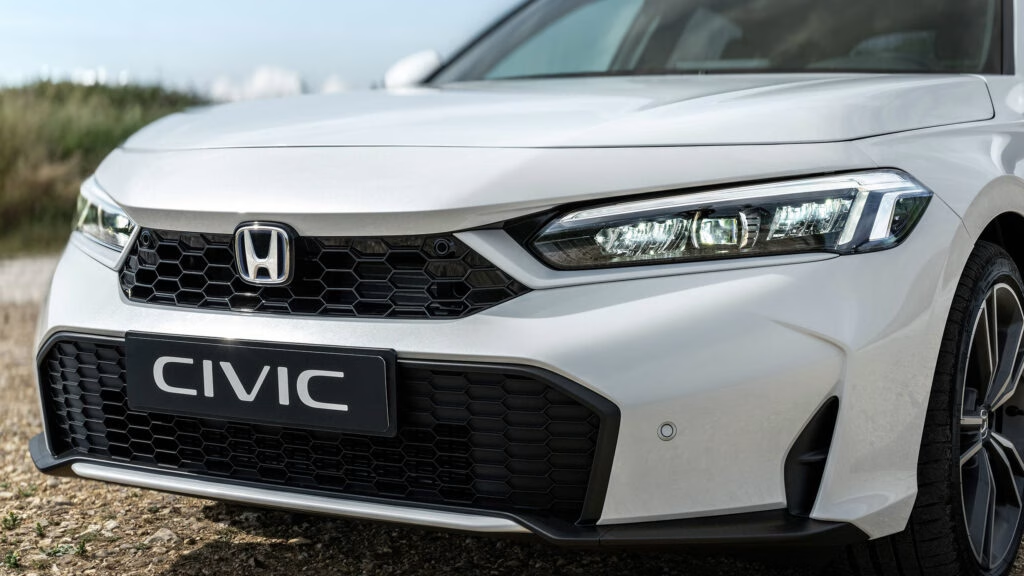What’s Actually New With the Updated Honda Civic Hatchback in Europe?
Honda’s latest update to the European Civic hatchback isn’t a radical overhaul, but it’s a thoughtful refresh that aims to keep this popular model feeling sharp in a fiercely competitive segment. If you’re wondering what’s changed—and whether it’s enough to keep the Civic relevant against rivals like the Volkswagen Golf—let’s break it down.
How Has the Exterior Changed, and Does It Really Stand Out?
At first glance, you might not spot the differences. But look closer and you’ll notice the Civic’s front end has been subtly, but effectively, reworked. The new bumper design ditches the fog lights entirely, relying on the improved LED headlights to do the heavy lifting in poor weather. This isn’t just a cost-saving measure—Honda claims the new lighting tech is so good, extra lamps are unnecessary.
The upper and lower grilles have both grown, with a gloss black honeycomb mesh that gives the car a more assertive, modern face. There’s also a neat touch: slim, body-colored trim pieces now sit between the grille and headlights, adding a bit of visual width and polish. It’s not a head-turner in the way a full redesign might be, but these tweaks do give the Civic a fresher, more premium look.
For those who care about the details, there’s a new paint color—Seabed Blue—replacing the outgoing Premium Crystal Blue. Wheel designs get an update too: top-spec Advance models now ride on 18-inch, two-tone diamond-cut alloys, while Sport trims opt for a stealthier black finish. Small changes, sure, but they add up.
What’s Changed Inside, and Does It Feel More Upscale?
Honda’s interior updates are all about making the Civic feel a notch above its price point. Every trim now gets a black headliner and black A-pillar trim, which instantly makes the cabin feel more cocooned and sophisticated. Matte chrome accents around the air vents add a subtle touch of class—think less “boy racer,” more “grown-up commuter.”
Equipment upgrades are smartly targeted. The Advance trim gains footwell lighting for a touch of ambiance, while the Sport model now includes a heated steering wheel as standard—something you’ll appreciate on chilly mornings. Even the entry-level Elegance trim isn’t left out, with a wireless phone charging pad now included so you can keep your devices topped up without fuss.
These aren’t headline-grabbing changes, but they’re the kind of thoughtful improvements that make daily life with the Civic just a bit more pleasant. It’s clear Honda is listening to feedback and focusing on the details that matter to real drivers.
Is the Powertrain Any Different, or Is It the Same Under the Hood?
Mechanically, the Civic’s heart remains unchanged. The only engine available in Europe is the e:HEV hybrid system, which pairs a 2.0-liter petrol engine with two electric motors for a combined 181 horsepower (184 PS). While some enthusiasts might mourn the loss of the Type R (now retired in Europe), the hybrid setup is surprisingly lively. It delivers strong acceleration for a family hatch, and the instant torque from the electric motors makes city driving feel effortless.
Honda’s hybrid system is a bit of an outlier in the segment. Unlike mild hybrids, the e:HEV can run on electric power alone at low speeds, seamlessly switching between petrol and electric as needed. This not only boosts efficiency—official figures suggest around 4.7L/100km (roughly 60 mpg UK)—but also keeps running costs low, a big win for budget-conscious buyers.
How Does the Civic Stack Up Against the Competition?
The European hatchback market is brutal, with the VW Golf, Ford Focus, and Toyota Corolla all fighting for attention. The Civic’s refresh doesn’t leapfrog it to the front of the pack, but it does keep it feeling current. The hybrid powertrain is a genuine advantage, especially as more cities clamp down on emissions. And while the Golf still leads in terms of badge prestige, the Civic’s reputation for reliability and value is hard to ignore.
Recent data from JATO Dynamics shows that hybrid and electrified vehicles now account for over 30% of new car sales in Europe—a trend that’s only accelerating. Honda’s decision to stick with a hybrid-only Civic in Europe isn’t just about emissions regulations; it’s a smart play for the future.
Are These Changes Likely to Come to the US Civic?
That’s the million-dollar question for fans across the Atlantic. The US-market Civic has its own lineup and engine options, but Honda often brings European design tweaks stateside after a year or two. If American buyers respond well to the sharper look and upgraded cabin, don’t be surprised to see similar updates on future US Civics.
What’s the Real-World Impact for Drivers?
For current Civic owners, the changes aren’t drastic enough to trigger upgrade envy. But for shoppers in the market for a practical, efficient hatchback, the refreshed Civic is more appealing than ever. The improved cabin ambiance, extra standard features, and continued focus on hybrid efficiency make it a smart, future-proof choice—especially as fuel prices and emissions rules keep tightening.
The big takeaway? The Civic’s refresh isn’t about perfection—it’s about smarter adjustments. Start with one change this week, and you’ll likely spot the difference by month’s end.

